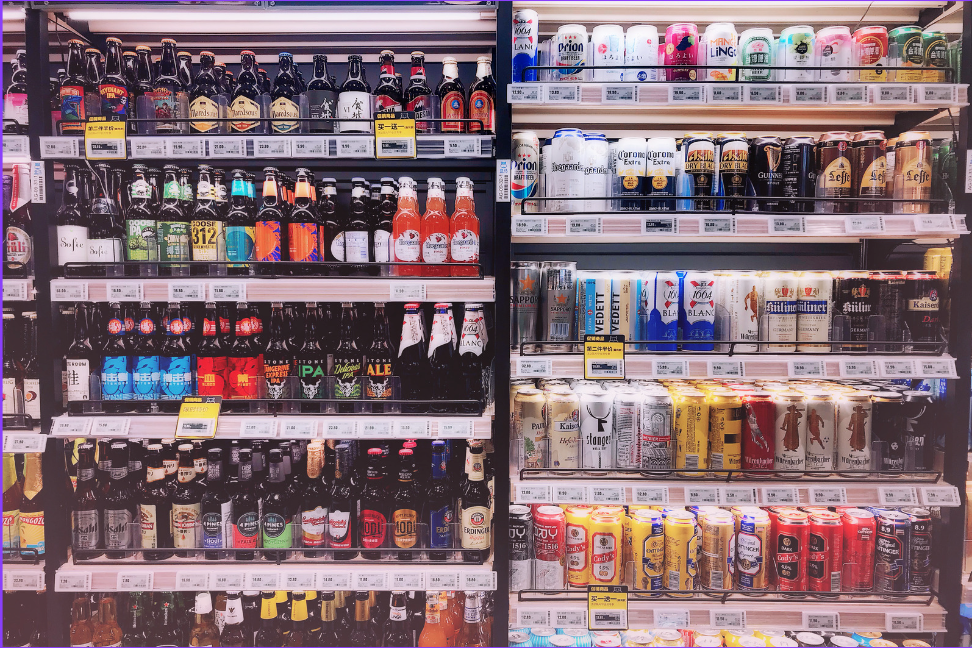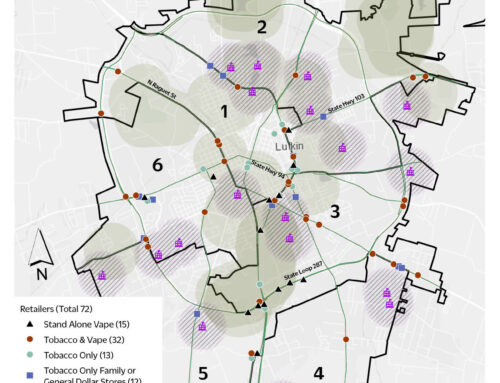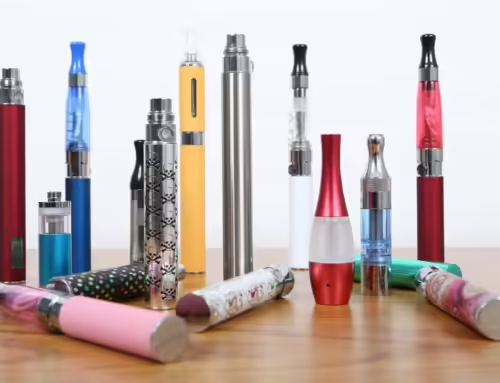The alcohol industry is quite transparent in their goals to recruit new drinkers, including women, Hispanic consumers and “beer rejectors”. One strategy that has seen growing success over the course of the last 20 years is offering new products that are sweeter and easier to drink than traditional beer or distilled spirits. These flavored malt beverages, sometimes referred to as alcopops or ready-to-drink beverages, feature low prices, a variety of flavors, high alcohol content and are widely available. Product packaging often features bright colors and eye-catching designs. In recent years, a number of new beverage options have hit the market. Brands popular for non-alcoholic products already familiar to children and youth, like Mountain Dew, are developing these new beverages. This strategy of using flavors to make a product more appealing and palatable for youth or other new consumers comes straight from Big Tobacco’s playbook.
These types of products are increasingly available in convenience stores, grocery stores and mass merchandisers across the country. These places are all easily accessible to youth under the age of 21 – leaving plenty of opportunities for regular exposure to alcohol marketing and promotions. Research shows alcohol advertising has a meaningful impact on youth, including associations with heavier drinking, brand recognition or brand preference and the perception that alcohol consumption is more prevalent among peers. In fact, one study calculated that for each dollar spent on advertising, young people drank 3% more each month. All youth are exposed to alcohol advertising on an almost daily basis, but African American and Hispanic youth are exposed to more alcohol advertising than white youth.
Many studies have found that as price increases, alcohol consumption decreases, which is why the alcohol industry has employed a number of strategies to keep alcohol cheap at the point of sale. This includes happy hours or specials at on-premises outlets, and coupons, sales or multi-buy discounts at off-premises retailers. With so many beverage options now available in single-serve containers – including canned wine, cocktails or other flavored malt beverages – shoppers are encouraged to make impulse purchases. Price-sensitive consumers are also able to find something that fits with their budget. In some cases, singles with extremely high alcohol content can be priced cheaper per fluid ounce than regular, nonalcoholic energy drinks or soda. With alcohol so easily available and advertised heavily at so many price points, it is no surprise to see underage alcohol use and other problem drinking behaviors.
Differences in alcohol availability can help explain why alcohol-related harms impact some communities more heavily than others. One way to measure alcohol availability is to examine alcohol outlet density, or the concentration of retail alcohol establishments in a given geographic area. Research demonstrates that greater alcohol outlet density leads to increased excessive alcohol use and ultimately greater alcohol related harms, such as violence, traffic crashes, and property damage. Alcohol outlet density varies widely among states and communities. An understanding of the differences across geographies and demographics should guide the development of public health interventions for reducing alcohol outlet density. Research shows that neighborhoods with a higher proportion of Black residents or more families living in poverty tend to have a higher alcohol outlet density. Mapping of alcohol outlet density in Durham, North Carolina and Baltimore City, Maryland found areas with a history of redlining to be a strong predictor of where alcohol outlets cluster, even many decades later. There is strong scientific evidence that regulating alcohol outlet density is one of the most effective strategies for reducing excessive alcohol consumption and related harms. Alcohol outlet density can be regulated through licensing or zoning restrictions that cap the number of alcohol outlets or restrict the locations where alcohol can be sold.
Learn more:
- CADCA Webinar Wednesday Recording: Addressing Health Equity with Alcohol Density Regulation
- Guide for Measuring Alcohol Outlet Density (CDC)
- Regulating Alcohol Outlet Density: An Action Guide (CADCA)
This post was originally published as a feature article for The Geographic Health Equity Alliance (GHEA), a CADCA initiative. GHEA is a CDC funded National Network dedicated to reducing geographic health disparities related to tobacco and cancer.





